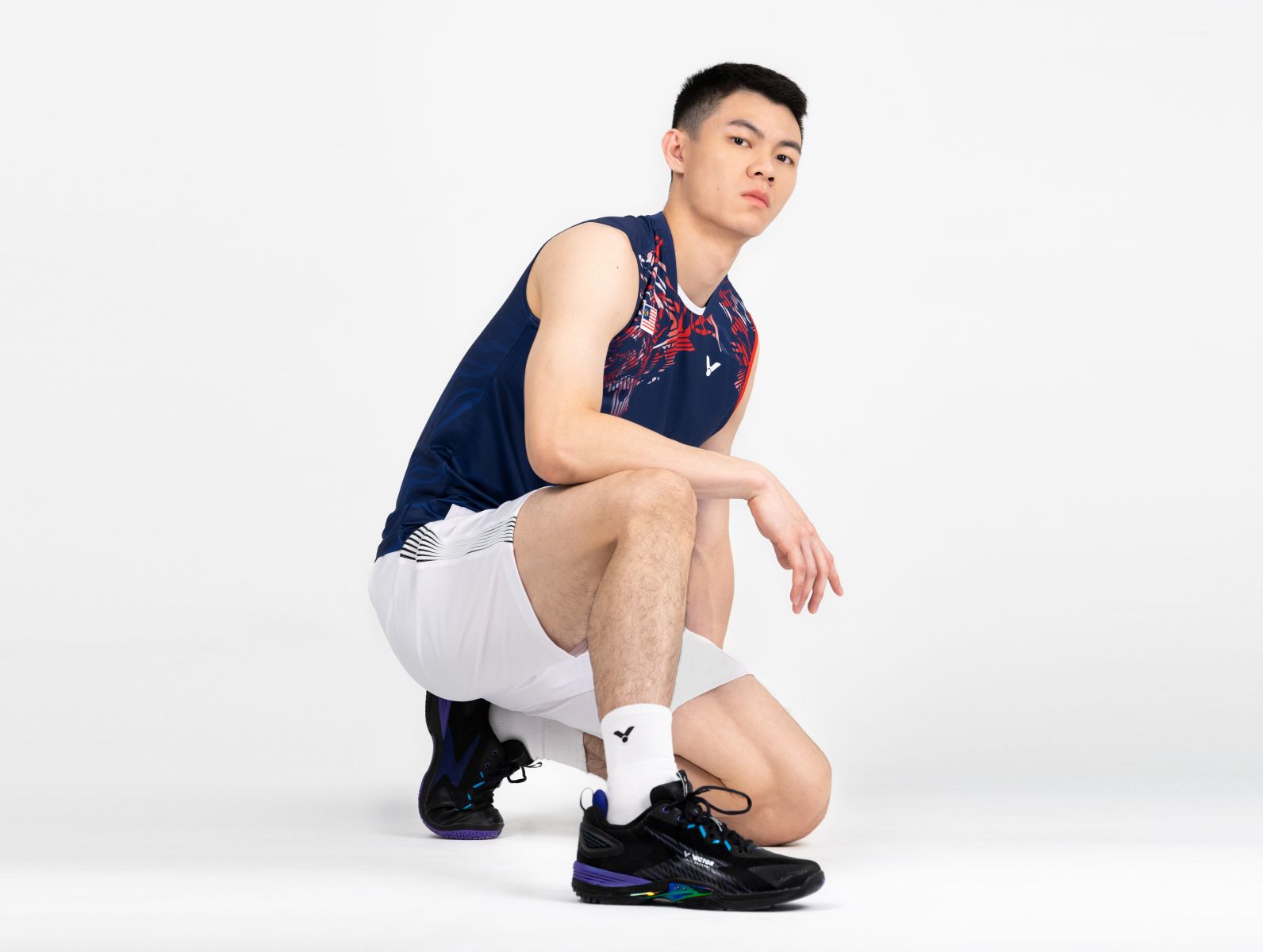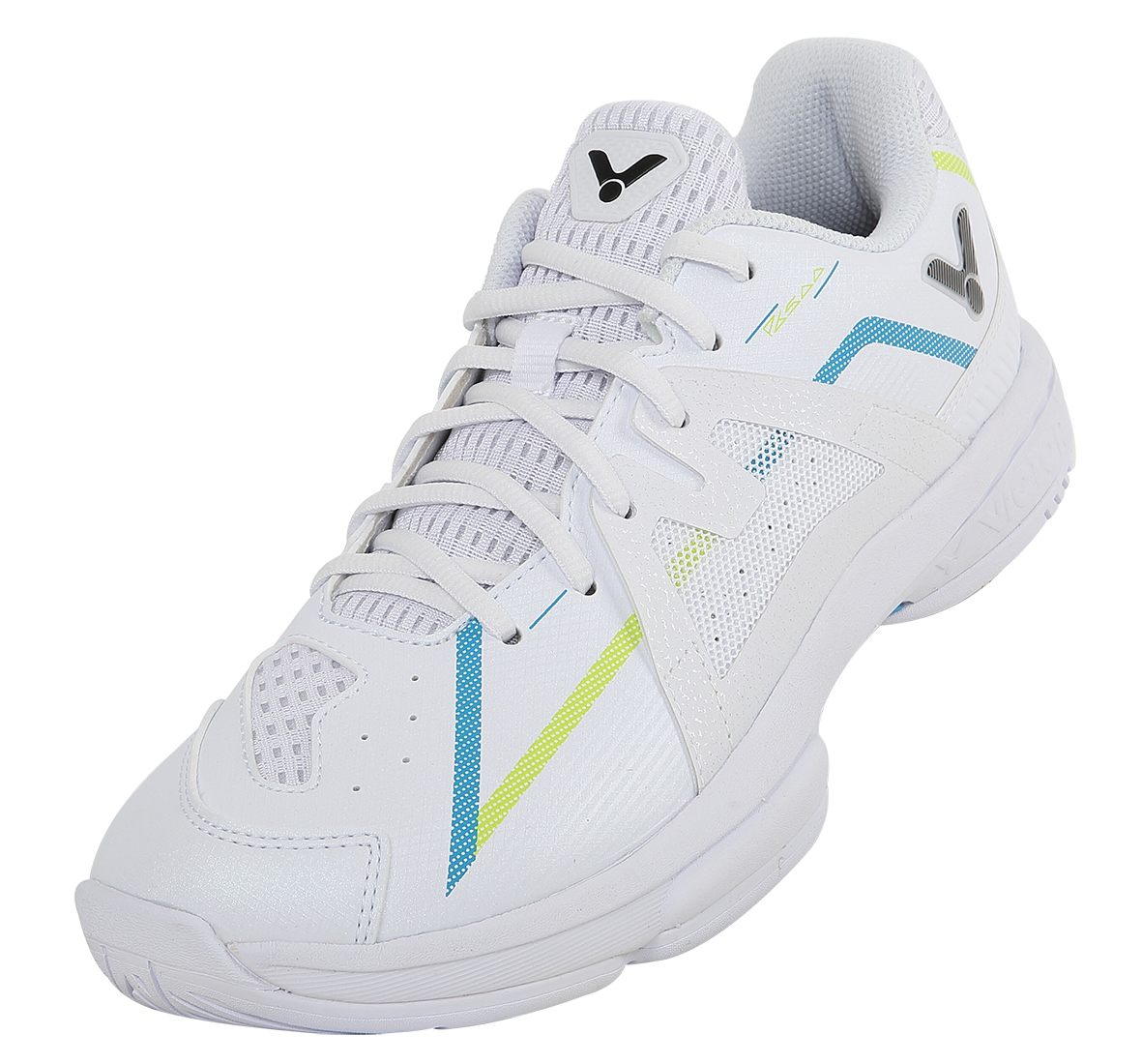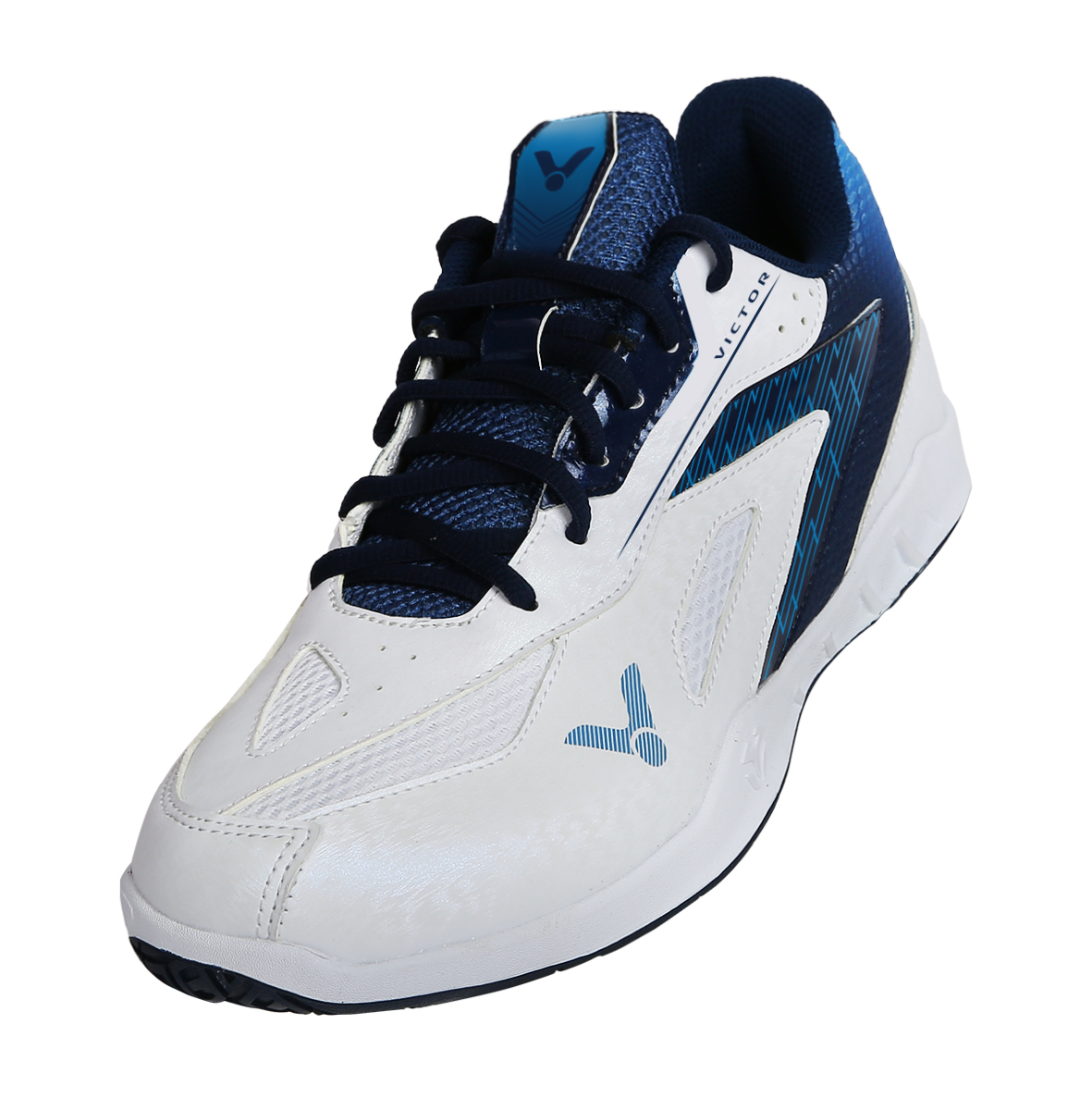Three Tips for Choosing the Right Badminton Shoes

By Diana, Renee & Johan, Footwear Development Department

Badminton is growing increasingly popular in recent years. If you are playing badminton for leisure and fun, it is important to choose the right shoes for the activity.
Badminton footwork involves moving forward and backward, lunging sideways, as well as leaping and landing. A right pair of shoes can help improve your performance and prevent injury risk, so it is important to wear "sport-specific shoes" for different types of sports. Here are three tips that the experts share on how to choose the right badminton shoes:

Choose Badminton Shoes Based on Your Exercise Habits
A good pair of badminton shoes should have the basic features required for fast movements, such as well-fitting, anti-skid, ensuring effective take-offs, shock-absorbing, stable, and more.
- Well-fitting: VICTOR's lasts can be divided into V-SHAPE and U-SHAPE based on different foot shapes, and can be further split into Slim 2.0, Standard 2.5, Wide 3.0, and Square Toe Wide 3.5 based on their width. Players with narrower feet or who prefer a snug fit can go for narrow lasts or V-SHAPE lasts; players with the opposite needs can pick wider lasts or U-SHAPE lasts to enjoy greater comfort.
- Stable: Players with heavier footwork or greater weights can put extra pressure or strain on the shoes, so it is better for them to choose shoes designed with stable and supportive uppers and soles, such as carbon fiber midsole, TPU sole, or no-sew upper.
- Ensuring effective take-offs: Players who look for speed can go for lighter shoes. The stiffness of the midsole can affect the take-off performance: the stiffer the midsole material, the better players can lift off from the floor. If you find the shoes you wear are soft and make take-offs less effective, try to press the midsole area and see how stiff it is when picking shoes, and choose shoes with stiffer midsoles or with soles optimized for take-offs. However, for players who like soft midsole but don't want to compromise on take-off performance, the low-to-the-ground design is a great choice as it helps accelerate response time and facilitate effective take-offs.
- Shock-absorbing: Badminton footwork tends to induce more pressure on the forefoot and hindfoot. If you find discomfort caused by pressure on your soles, it is better to choose shoes built with a better shock-absorbing structure or material, or shoes designed with thick midsole on the forefoot and hindfoot areas, both of which can effectively reduce pressure on the soles of the feet during exercise.
- Durable: Some players develop the habit of dragging, which can make a pair of new-looking shoes show excessive wear on the inside edge of the toe caps. Shoes with wear-resistant TPU or KPU toe caps are a great choice for this type of players to make their shoes longer-lasting.

The Lifespan of the Shoes Depends on How Often You Play
The shoe's performance will decrease with frequent use; the intensity of exercise can also affect how fast it starts to decline. For example, players who engage in intensive training will find a significant decrease in the performance of shoes after around a month; for amateur players who play three times a week, it might take three months to feel the decline, especially in shock absorbency and the fitness of shoes. It is recommended for players who play more than three times a week to prepare two pairs of shoes and take turns to wear. This can allow the shoes to be worn longer.
.jpg)
Try On to Make Sure the Shoes Are Well-Fitting and Comfortable
- Size: Always try on shoes with socks. There should be about one finger's width of space at the end to prevent your feet from moving around inside of the shoes when doing a sudden stop.
- Fitness: The uppers should fit the feet snugly (height- and width-wise both). If it is easy for the feet to move around inside of the shoes, then the shoes might be too big; if it feels tight, then there is not enough room in the shoes.
- Comfort: If the size and fitness are right, try to bend your forefoot and see if the material puts pressure on your foot.
When choosing badminton shoes, avoid getting bigger sizes just for the comfort on the forefoot. One should always pick the shoes with lasts and sizes that fit their own foot shapes to avoid injury risk. A good pair of shoes allows you to enjoy badminton more safely and helps to improve your performance. We hope this article can help everyone find the shoes that best suit them.











